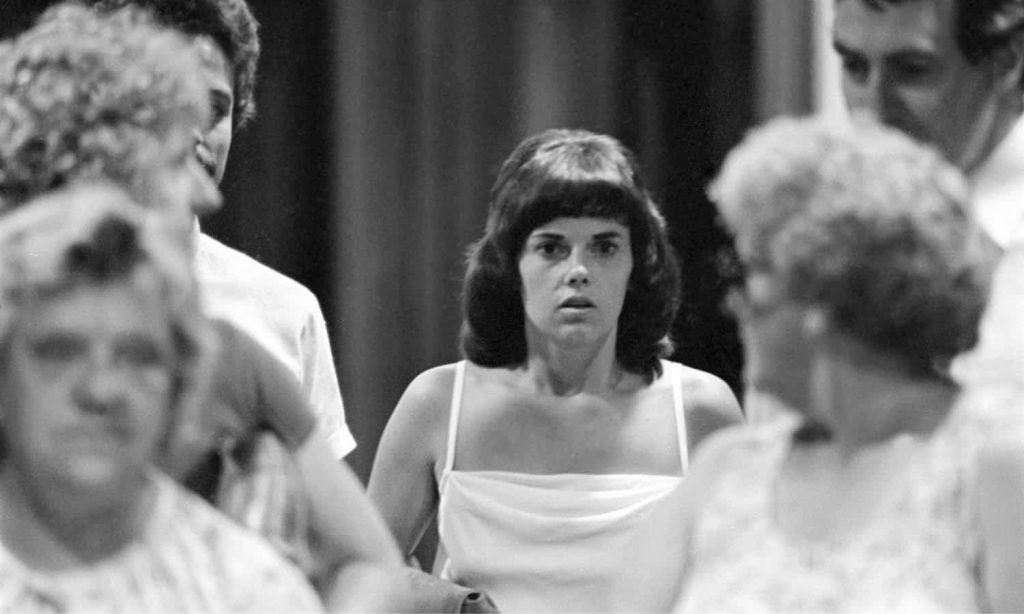It was one of Australia’s most publicised murder trials that divided the nation for decades and now, four decades after the disappearance of baby Azaria Chamberlain, her mother Lindy has spoken out about that night and the devastating years that followed.
In the documentary Lindy Chamberlain: The True Story, narrated by actor Sam Neill, the two-part series featured insights and exclusive interviews with family friends, high court judges, forensic experts, lawyers, high profile media, professors of history, novelists, filmmakers, and more, giving viewers the complete story.
So, what happened to baby Azaria?
On August 17, 1980, while on a family camping trip in Uluru, a dingo took nine-week-old Azaria from their family tent.
Following her disappearance, a series of court cases and inquests saw Chamberlain, now 72, convicted of murdering her own child, and in 1982, she was sentenced to life in prison. After serving almost four years behind bars, she was cleared of the charge in 1986 and awarded $1.3 million in compensation — after a piece of her daughter’s clothing had been found near a dingo lair.
In an interview with 2GB’s Ben Fordham, Chamberlain revealed that “forgiveness” helped her to recover from the pain and suffering caused by the ordeal.
“Forgiveness stops you from looking at the past, to stop being angry about things that have happened and you can’t change and (to stop looking back) … at the people who deliberately did those things to you,” she said.
“Sometimes we can’t forgive other people, but we can forgive ourselves.”
The sentencing was described at the time as “Australia’s most notorious miscarriage of justice”. Chamberlain described it as no one wanting to know the truth.
“I don’t think anyone wanted it to come to light apart from us,” she said.
The documentary which premiered on Sunday and Monday, September 27 and 28, saw Chamberlain reveal a letter she had smuggled out of the jail.
Her impending release, which was pushed forward after a petition was signed by 131,000 Australians, rested on the shoulders of the Northern Territory Attorney-General Marshall Perron.
In the letter, Chamberlain wrote about the unjust “farce” she was forced to endure.
“I’ve tried to co-operate, but still this farce continues,” she wrote. “For nearly three years, I have worked as an inmate of this prison for 30 cents a day, trying to do whatever I was asked pleasantly.
“I have sought an inquiry whereby the NT Government had a chance to redeem their own name. In return, they have ignored decency and justice and still scoff at it. As from 1pm Darwin time today, I’m refusing to work in any way whatsoever for this prison. I did not kill my lovely daughter and refuse to be treated as a criminal any longer.”
On February 2, 1986, the body of a British tourist, David Brett, was found at the base of Uluru. 70 metres from his decaying body was Azaria’s matinee jacket — the one she had been wearing the night she disappeared.
“All the way through, I’d said there was a matinee jacket and the Crown said it was a fanciful lie,” Chamberlain said in the documentary.
But there it was and it was the key to her freedom.
In 2012, 32-years after Azaria’s death, a coroner ruled in favour of the Chamberlain’s events.
At the time, Chamberlain said it was “a weight is off my shoulders.”
“I’m not leaving something for my kids to deal with. I’m not leaving a legacy for my grandchildren to say, “That’s not true … My grandmother didn’t do it. Now, they’d just go, Well, you’re stupid. Just look at history.”
You can watch the full two-part series of Lindy Chamberlain: The True Story can be on 10 play.
Read more stories from TheLatch— and follow us on Facebook.

